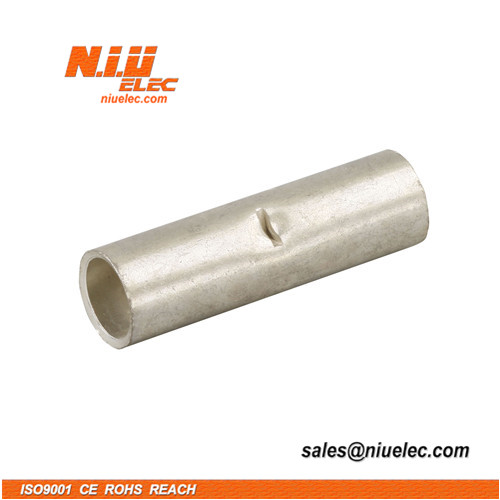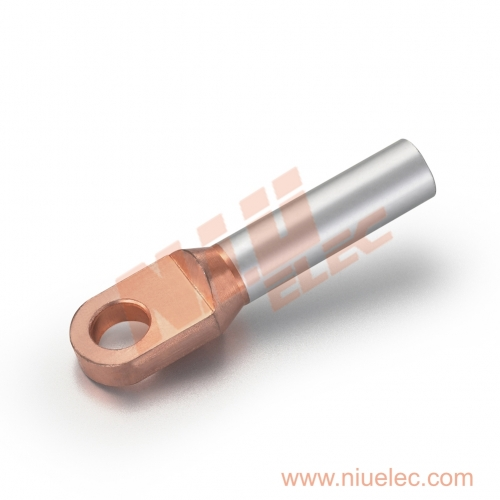In an era increasingly defined by environmental consciousness and resource scarcity, industries worldwide are facing mounting pressure to adopt sustainable practices. While focus often lands on renewable energy or waste recycling, a fundamental yet frequently overlooked aspect of sustainability lies in the durability of the materials we use. The equation is simple yet profound: Durability = Reduced Replacement Frequency = Lower Resource Consumption. This principle highlights that choosing materials built to last isn't just an economic decision; it's a powerful environmental strategy. Among the champions of this approach stands stainless steel, particularly in its versatile coil form, offering a compelling case for how longevity directly translates into tangible resource savings across multiple dimensions.This article explores the interconnectedness of stainless steel coil durability and environmental stewardship, dissecting how its inherent properties and extended lifecycle contribute significantly to reducing our collective resource footprint. With the support of a reliable stainless steel coil supplier, industries can ensure access to high-quality, durable materials that align with sustainability goals. We will delve into material performance, lifecycle impacts, maintenance reduction, waste minimization, and the growing trend of green procurement, illustrating why durable materials are central to a sustainable industrial future.
Table of contents:
The Foundation: Material Performance and Inherent Longevity
Stretching the Lifecycle: Extended Use Equals a Lower Carbon Footprint
The Ease of Endurance: Reduced Maintenance, Reduced Resource Drain
Stemming the Tide: Less Replacement Means Less Waste
The Rise of Responsible Sourcing: Durability in Green Procurement
The Foundation: Material Performance and Inherent Longevity
At its core, the environmental advantage of stainless steel begins with its intrinsic properties. Unlike many other metals or coated materials that degrade relatively quickly under environmental stress, stainless steel possesses remarkable natural resistance to corrosion, oxidation, and high temperatures. This resilience stems from the presence of chromium (typically at least 10.5%), which forms a passive, self-repairing chromium oxide layer on the surface. This invisible shield protects the underlying steel from attack by moisture, chemicals, and atmospheric pollutants.
Different grades offer tailored durability for specific applications. For instance:
- Grade 201:Offers good strength and corrosion resistance for general-purpose applications, providing a durable solution where extreme conditions aren't paramount.
- Grade 304:The workhorse of the stainless steel family, widely sought after for its excellent balance of corrosion resistance, formability, and strength. Its durability makes it ideal for everything from kitchen appliances and architectural panels to industrial piping and food processing equipment. Many businesses specifically seek a reliable 304 stainless steel coil supplier for this reason.
- Grade 316L:Contains molybdenum, significantly enhancing its resistance to chlorides and acidic environments, making it indispensable for marine applications, chemical processing, and medical implants where maximum longevity under harsh conditions is critical.
Compared to materials like carbon steel (which rusts readily without protective coatings), galvanized steel (where the coating eventually wears off), or plastics (which can degrade under UV exposure or stress), stainless steel offers a significantly longer service life in its bare form. This inherent durability means components made from stainless steel coils require replacement far less frequently, directly reducing the demand for raw material extraction, smelting, processing, and manufacturing associated with producing replacements. Every time a stainless steel component outlasts a less durable alternative, it represents a saving in iron ore, chromium, nickel, energy, water, and associated emissions.

Stretching the Lifecycle: Extended Use Equals a Lower Carbon Footprint
The environmental impact of any product extends across its entire lifecycle – from raw material extraction to manufacturing, transportation, use, and eventual disposal or recycling. Extending the 'use' phase through durability dramatically lowers the overall environmental burden. Products manufactured from high-quality stainless steel coils often boast lifespans measured in decades, not years.
Consider the embodied energy and carbon footprint associated with manufacturing. Producing any material requires significant energy input. When a product needs frequent replacement, this energy expenditure is repeated multiple times over the functional lifespan of the application (e.g., a building facade, a bridge component, an industrial tank). A stainless steel component designed to last 50 years, compared to an alternative needing replacement every 10-15 years, avoids the manufacturing emissions, raw material consumption, and transportation impacts of 3-4 replacement cycles.
This extended lifecycle has profound implications:
- Reduced Manufacturing Emissions:Fewer production runs mean less energy consumed (often from fossil fuels) and fewer greenhouse gases emitted.
- Lower Transportation Footprint:Less frequent replacement reduces the need to transport raw materials to factories and finished goods to installation sites over the long term.
- Economic Savings for End-Users:While potentially having a higher initial cost, the longevity of stainless steel translates into a lower Total Cost of Ownership (TCO). Businesses save significantly on replacement materials, labor for removal and installation, and operational downtime associated with maintenance and replacement cycles.
Examples abound in demanding environments:
- Architectural Structures:Stainless steel cladding, roofing, and structural elements can withstand weathering for generations, maintaining aesthetic appeal and structural integrity with minimal intervention.
- Marine Engineering:In saltwater environments highly corrosive to other metals, stainless steel (particularly Grade 316L) provides essential durability for ship components, offshore platforms, and coastal infrastructure.
- Industrial Piping Systems:Carrying chemicals, high-temperature fluids, or potable water, stainless steel pipes resist corrosion and leaching, ensuring safety and longevity, minimizing leaks and the need for premature replacement.
The Ease of Endurance: Reduced Maintenance, Reduced Resource Drain
Durability isn't just about resisting catastrophic failure; it's also about maintaining functional and aesthetic integrity with minimal intervention. High-quality stainless steel coils, often supplied with specific surface finishes like 2B (smooth, semi-reflective), BA (Bright Annealed, highly reflective), or No. 4 (brushed), are inherently low-maintenance.
The passive chromium oxide layer not only prevents rust but also makes the surface less prone to staining and easier to clean. This contrasts sharply with materials requiring constant upkeep:
- Painting and Coating:Carbon steel often needs regular painting or specialized coatings to prevent corrosion. This involves the consumption of paints (often containing volatile organic compounds - VOCs), solvents, energy for application and curing, and the eventual need to strip and reapply, generating hazardous waste. Stainless steel eliminates this entire cycle of resource consumption and waste generation.
- Harsh Cleaning Regimens:Some materials may require aggressive chemical cleaning to remove tarnish or biological growth. Stainless steel can typically be cleaned effectively with mild detergents and water, reducing the consumption of harsh chemicals and the potential for environmental contamination through runoff.
- Resource Depletion for Maintenance Materials:The perpetual need for paints, coatings, sealants, potent cleaners, and the tools to apply them represents a continuous drain on resources. The 'fit and forget' nature of many stainless steel applications significantly curbs this ongoing consumption.
By minimizing the need for maintenance, durable stainless steel reduces the operational consumption of energy, water, chemicals, and consumable materials, further lightening its environmental load throughout its long service life.
Stemming the Tide: Less Replacement Means Less Waste
Every product eventually reaches the end of its life. However, extending that life dramatically reduces the rate at which waste is generated. Lower replacement frequency directly translates to less material entering the waste stream.
When components made from less durable materials fail or degrade, they become scrap. This scrap requires collection, transportation, and processing – either for recycling (which consumes energy) or disposal in landfills (which consumes space and can lead to leaching). By significantly reducing the number of times a component needs replacing over decades, stainless steel minimizes the generation of industrial solid waste.
This aligns perfectly with the principles of a circular economy, where keeping materials in use for as long as possible is a primary goal. Furthermore:
- Reduced Landfill Burden:Less frequent disposal alleviates pressure on landfill capacity.
- Lower Recycling Load:While stainless steel is highly recyclable, reducing the frequency of recycling events still saves the energy associated with collection, sorting, and remelting.
- Minimized Initial Waste:Sourcing material from a stainless steel coil supplier that offers custom widths and lengths allows manufacturers to optimize material usage and significantly reduce scrap generated during the initial fabrication process (e.g., minimizing offcuts). This practice, combined with the material's longevity, tackles waste at both the beginning and end of the product lifecycle.
Choosing durable stainless steel is an active step towards reducing the flow of materials into the waste and recycling systems, embodying the idea that conscientious usage itself is a form of environmental protection.
The Rise of Responsible Sourcing: Durability in Green Procurement
The business landscape is shifting. Increasingly, companies are integrating Environmental, Social, and Governance (ESG) criteria into their operational and strategic decisions, including procurement. The environmental impact of a company's supply chain is under growing scrutiny from investors, consumers, and regulators.
In this context, product lifespan and material durability are gaining recognition as key green procurement metrics. Choosing cheap, disposable options is increasingly viewed as short-sighted and environmentally irresponsible. Forward-thinking companies understand that specifying durable materials like stainless steel offers multiple advantages:
- Alignment with ESG Goals:Demonstrates a commitment to resource efficiency and reducing long-term environmental impact.
- Enhanced Brand Reputation:Signals responsibility and quality to customers and stakeholders.
- Supply Chain Resilience:Partnering with suppliers who provide consistently durable materials reduces risks associated with premature failures and supply disruptions.
- Meeting Tender Requirements:Public and private sector tenders increasingly include sustainability criteria, where product longevity can be a deciding factor.
The reliability and proven track record of stainless steel make it an attractive choice for businesses aiming to build sustainability into their products and operations. The focus shifts from merely the initial purchase price to the lifecycle value and environmental performance. Substituting short-lived alternatives with durable stainless steel becomes a strategic, responsible procurement action.
The connection is undeniable: prioritizing durability through materials like stainless steel is a powerful lever for reducing resource consumption and mitigating environmental impact. From its inherent resistance to degradation, which minimizes the need for replacement materials, to its extended lifecycle that lowers cumulative manufacturing and transportation emissions, its low maintenance requirements that save resources and prevent pollution, and its contribution to waste reduction, stainless steel coils embody the principle that longevity is intrinsically linked to sustainability. As industries and consumers increasingly demand greener solutions, the enduring nature of stainless steel provides a clear path forward. Making informed material choices is critical, and partnering with a reputable stainless steel coil supplier capable of providing consistent quality across various grades, like the options available from specialists such as YIHO GROUP, becomes a strategic step for businesses aiming to integrate durability and true sustainability into their operations and products for the long haul.





